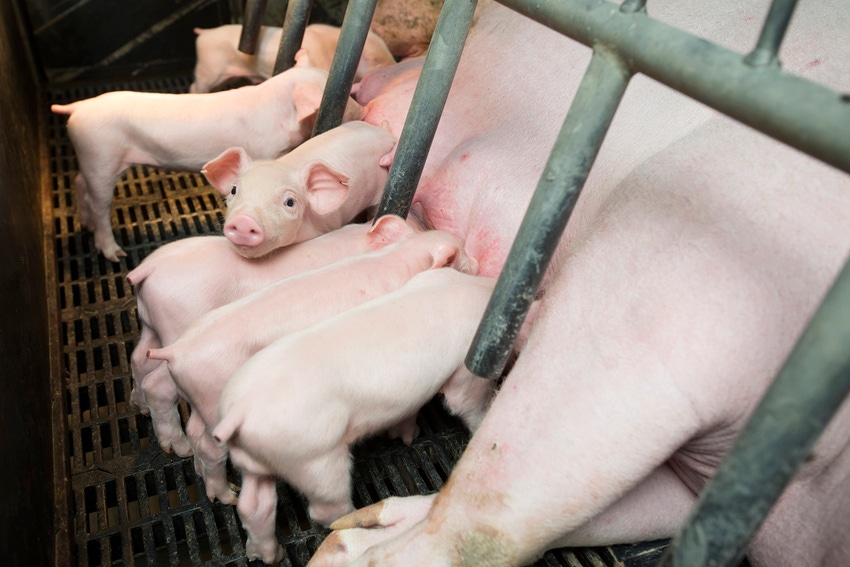Veterinarian says his practice had dealt with PRRS, but never with this highly pathogenic version.
August 31, 2017

By Paul Sundberg, Swine Health Information Center Executive Director
Preweaning mortality of 60%; up to 10% abortion rate; triple the rate of mummified fetuses. All of these were reality for swine herds in Manitoba after a novel strain of Porcine reproductive and respiratory syndrome broke last October. Consequences continue to be felt while practitioners and stakeholders work to control this outbreak.
Blaine Tully, DVM, is a partner at Swine Health Professionals, a swine-specific veterinary practice in Steinbach, Manitoba, and president of the Canadian Association of Swine Veterinarians. He and the staff at SHP have been engaged in the care of animals affected with a novel strain of PRRS since last fall. This more virulent strain of PRRS has had devastating impacts on affected producers.
One of the farms Tully specifically deals with is well-managed with good production numbers by Manitoba standards. The owners moved to antibiotic-free production recently and have been operating in a PRRS-positive but stable status for 10 years. This farm has 700 sows in a farrow-to-finish enterprise. The practice also has a large breed-to-wean farm infected with the new strain of PRRS. Tully says they have seen the disease impact farrow-to-finish farms as well as those with three site production models.
“By the end of 2016, there were three or four sites infected that we were aware of,” Tully remarks. “Subsequent to that, more farms have been identified.” The first signs of PRRS infection were increased abortions. “Abortions on some of our farms went from being quite rare to 8 to 10% of the sow inventory affected.” The disease moved very quickly after this discovery with high levels of stillborn pigs.
“Within 10 days, we were seeing preweaning mortality levels doubling and tripling. At the peak for PRRS infected herds, preweaning mortality was close to 60% of suckling piglets,” Tully reports. One on-going and sustained impact of PRRS has been double and triple levels of mummified fetuses.
Tully says their practice had dealt with PRRS but never with this highly pathogenic version. They had heard about similar breaks in the Midwest United States and eastern Canada, but this PRRS outbreak has been their first exposure to this level of impact.
“When we had farms break in spring and early summer this year, we were more prepared,” Tully says. “We were able to talk to producers to outline what they can expect.” The most recent PRRS break the area’s veterinary community is aware of was in June. He also says they have experienced a relatively large porcine epidemic diarrhea virus epidemic in Manitoba not long before the PRRS outbreak which resulted in heightened biosecurity, a benefit now as they face PRRS.
Affected farms are now able to go quickly on nonsteroidal anti-inflammatory drugs where possible to control fevers, to benefit lactating and pregnant animals and for keeping sows eating and otherwise productive. “Going into the fall, we’re expecting to see more farms infected despite a somewhat monumental attempt at biosecurity,” Tully says. “There’s a fairly significant collaboration effort amongst veterinarians. Ours is a four person, swine-only practice. There are at least three other swine practices and companies we know of trying to understand control and elimination strategies.” He says there is currently not a good understanding of how this novel strain of PRRS is moving from site to site or entering facilities.
“What’s been interesting, as we’ve investigated and collaborated with other veterinarians, is to realize we’re convinced it’s not a matter of vaccine or PRRS status with the new strain,” Tully states. “The clinical impact is just as significant regardless of vaccine history. We are still in low double-digit numbers of farms. We may see more trends develop as more farms become infected.”
You May Also Like



